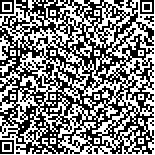| 引用本文: | 陈卓,谢苗苗,范玲玲,陈浩,梁社芳,李正国,游良志,吴文斌,杨鹏.SPAM模型和遥感结合提取华北地区春夏玉米种植面积[J].中国农业资源与区划,2018,39(8):124~134 |
| |
|
| 摘要: |
| [目的]获取农作物空间分布信息,对于研究区域粮食安全、气候变化、陆地碳氮循环和水资源利用等都具有重要意义。[方法]该研究首先应用作物空间分配模型(SPAM China模型),在5′×5′栅格尺度上重建了1980—2010年华北地区玉米空间分布信息; 然后基于SPOT VEGETATION长时间序列NDVI数据,获取了该区域的作物熟制信息,并进一步划分出了华北地区春、夏玉米种植类型区; 最后,重点分析了2000—2010年间华北地区春玉米和夏玉米种植区域的时空变化特征。[结果](1)1980—2010期间,华北地区玉米种植面积增加了360万hm2,增加面积集中在中南部地区,变化主要发生在2000年以后; (2)2000—2010期间,华北地区春玉米面积增加136万hm2,占该区玉米总种植面积的比例由17%上升至27%; 夏玉米种植面积尽管也增加了87万hm2,但占该区玉米总种植面积的比重呈下降趋势; (3)春夏玉米混种区为华北地区玉米主产区,近年来呈现为春玉米增加、夏玉米减少的发展趋势,全区域92%春玉米面积增加和76%夏玉米面积减少均发生在春夏玉米混种区域内,可见该区以春玉米为代表的一熟制正呈现逐步取代以冬小麦—夏玉米为主二熟制的变化趋势。[结论]该文基于SPAM模型和遥感结合提取华北地区春、夏玉米种植面积的方法,为大区域、长时间尺度作物种植信息的获取提供了新思路。 |
| 关键词: 玉米作物空间分配模型种植制度NDVI华北地区 |
| DOI: |
| 分类号: |
| 基金项目:农业部“948”项目(2016 X38); 农业部财政专项项目(国库616-3); 国家自然科学基金项目(41171328) |
|
| EXTRACTION OF SPRING AND SUMMER MAIZE AREA IN NORTH CHINA BY USING SPAM MODEL AND REMOTELY SENSED IMAGES |
|
Chen Zhuo1,2, Xie Miaomiao3, Fan Lingling4, Chen Hao4, Liang Shefang4, Li Zhengguo4, You Liangzhi5, Wu Wenbin2,6, Yang Peng2,6
|
|
1. School of Land Science and Technology, China University of Geosciences(Beijing), Beijing 100083, China;2. Key Laboratory of Agricultural Remote Sensing (AGRIRS),Ministry of Agriculture / Institute of Agricultural Resources and Regional Planning, Chinese Academy of Agricultural Sciences, Beijing 100081, China;3.School of Land Science and Technology, China University of Geosciences(Beijing), Beijing 100083, China;4.Key Laboratory of Agricultural Remote Sensing (AGRIRS),Ministry of Agriculture / Institute of Agricultural Resources and Regional Planning, Chinese Academy of Agricultural Sciences, Beijing 100081, China;5.Environment and Production Technology Division, International Food Policy Research Institute, 2033K Street, NW, Washington, DC 20006, USA;6.4. Chinese Academy of Agricultural SciencesGent University Joint Laboratory of Global Change and Food Security, Beijing 100081, China
|
| Abstract: |
| Obtaining the spatial temporal distribution of crops is of great significance for the study of regional food security, climate change, terrestrial carbon and nitrogen cycling and water resources utilization. Based on county level crop statistics and other ancillary information in North China, spatial distribution of maize in the major maize growing areas was modeled within 5′ × 5′ grid cells for the period 1980—2010 by using a cross entropy based spatial allocation model (Spatial Production Allocation Model for China, SPAM China). With the aid of the SPOT/VGT NDVI ten day composed time series data collected from April 2000 to October 2010, we built classification rules to identify the main maize types, including spring maize and summer maize. Maize planting areas were further classified into single spring maize area, spring and summer maize hybrid area and single summer maize area. On this basis, spatial transition of maize types were investigated from both maize sown acreage. The results showed that: (1) Maize planting area increased significantly (3.6×106 hm2) and distributed mainly at central and southern in North China from 1980 to2000; (2) From 2000 to 2010, spring maize area increased by about 1.36 million hm2, accounting for 17% to 27% of the total maize area; Meanwhile, summer maize area also increased about 0.93 million hm2 in the south part of North China, accounting for 83% to 73% of the total maize area; (3) Increased spring maize and decreased summer maize were mainly converted from the previous summer maize in the spring and summer maize hybrid area, which 92% increase in spring maize area and 76% reduction in summer maize area occurred in this type of area. It was inferred that single cropping system for spring maize was taking place previously double cropping system (winter wheat and summer maize) in north and middle part of North China. |
| Key words: maize Spatial Production Allocation Model cropping system NDVI North China |

